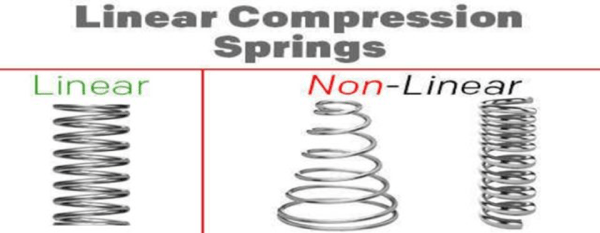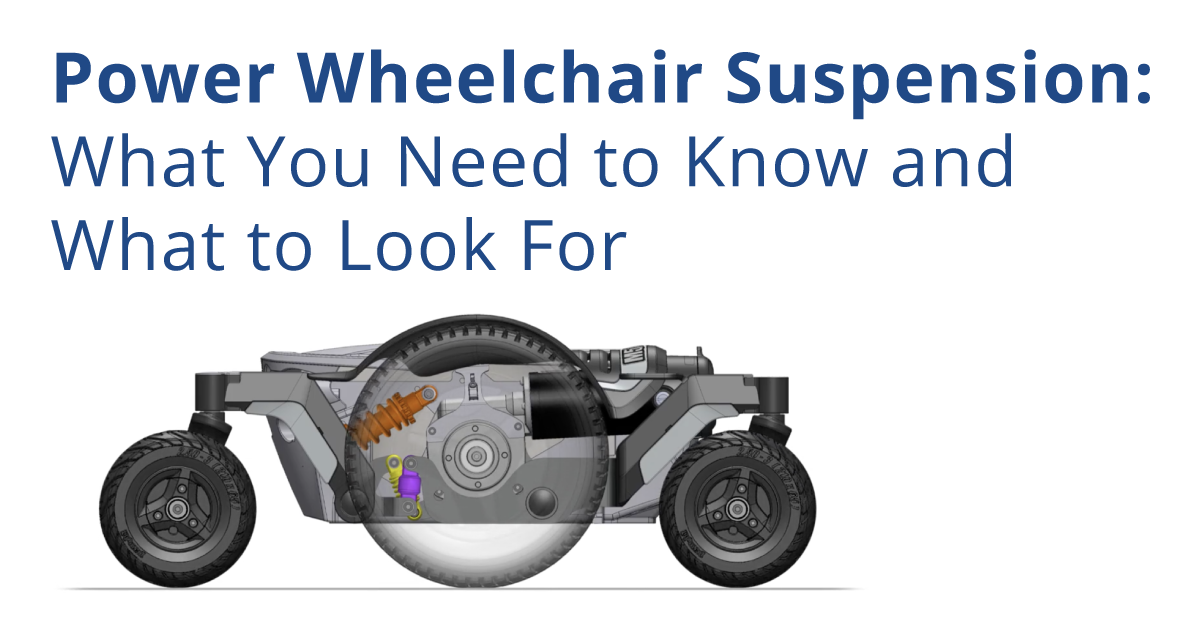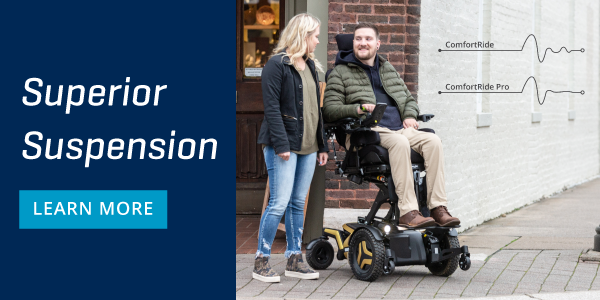Today's blog is written by Rachel Fabiniek, our clinical educator in Australia. Rachel has been offering a blog series on drive wheel configuration which has led to this blog on the importance of power wheelchair suspension for the end user. Although all power wheelchairs have some sort of suspension, it’s important to understand that they are not all equal. Read Rachel’s blog to better understand what you should look for when comparing power wheelchair suspension.
Over the past 3 weeks we have talked about drive wheel configuration and some tips on how to decide which option is right for you. This week we are going to discuss power wheelchair suspension. The suspension can vary from chair to chair even within each manufacturer, but there are some key points that we should discuss.
Compression Springs: Linear vs Non-Linear
Most power wheelchairs on the market are going to use compression springs for their suspension. There are two types of compression spring that are typically used: Linear and Non-linear.
Non-linear springs as seen in the photo below allow for changes in compressive load at different points of the range. What this means is that you can have the looser spring coils at the beginning phase to help with climbing over obstacles. The trade-off will be that you will lose some of the overall stability of the chair when not climbing. Many manufacturers will use one non-linear spring as their suspension.
Linear springs on the other hand allow for consistent stability throughout the compression range. For Permobil, these springs are also adjustable. The factory will set the suspension spring resistance based on the weight of the user and then the supplier or manufacturer representative will have the ability to further adjust depending on the needs of the user. With the Permobil M and F series, the suspension will be composed of multiple linear springs to achieve optimal traction and suspension.

Why does this matter?
The shape and the coil distance have an impact on how a spring works and affects the user. The better the suspension, the greater the decreased forces on the end-user. This could lead to increased seating tolerance, pain management, spasticity management, and decreases the risk for loss of balance or position in the wheelchair. One of the biggest points that I think about is driving over any uneven terrain whether it is just a sidewalk or grass at a park. It is important that as the chair goes over each bump that this bump is not felt by the user or limited as much as possible. If each bump is transmitted up to the user, then the user will likely not maintain their seated position. They will also feel all this vibration. According to one study by Wolf and colleagues in 2007, this vibration can lead to many impairments including fatigue and pain.
Suspension in any position
The final thought that I believe is one of the most crucial points to make is that the suspension on the wheelchair should always be there for you or your client. We know how important suspension is and the negative impact that not having this suspension could have on our clients. Therefore, we need to make sure that the wheelchair will maintain its suspension in any position and over all surfaces. No matter what position the user takes the Permobil power wheelchair to, such as elevate, posterior tilt, active reach, or standing, the suspension remains the same. If you want to drive your wheelchair in elevate, active reach, standing, or other positions, you want to be sure that your suspension will continue to support you in those positions and not lock out.
It is important to know that each manufacturer will have different suspension set up on their chairs. As a client, therapist, or caretaker make sure you ask about the suspension to determine which option is best for you.

Rachel Fabiniek, PT, DPT
Clinical Education Australia
Rachel Fabiniak began her studies at The Georgia Institute of Technology, where she graduated with her Bachelor of Science in Biology in 2009. Rachel then went on to receive her Doctorate in Physical Therapy from Emory University in 2013. After receiving her doctorate, Rachel went into clinical practice as a physiotherapist in the Spinal Cord Injury Day Program at Shepherd Center in Atlanta, Ga. Rachel also has experience in community physiotherapy and inpatient rehabilitation. During Rachel’s time at Shepherd Center, she developed a passion for seating and mobility which ultimately lead to her career with Permobil. Rachel joined on with Permobil in January 2018 and relocated to Sydney, Australia in June 2018 as the clinical education specialist for Australia and New Zealand.

